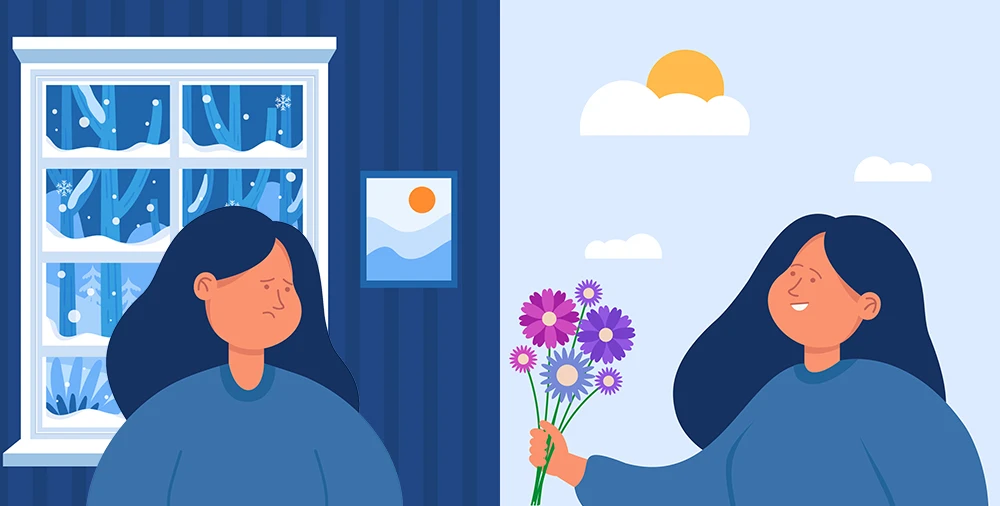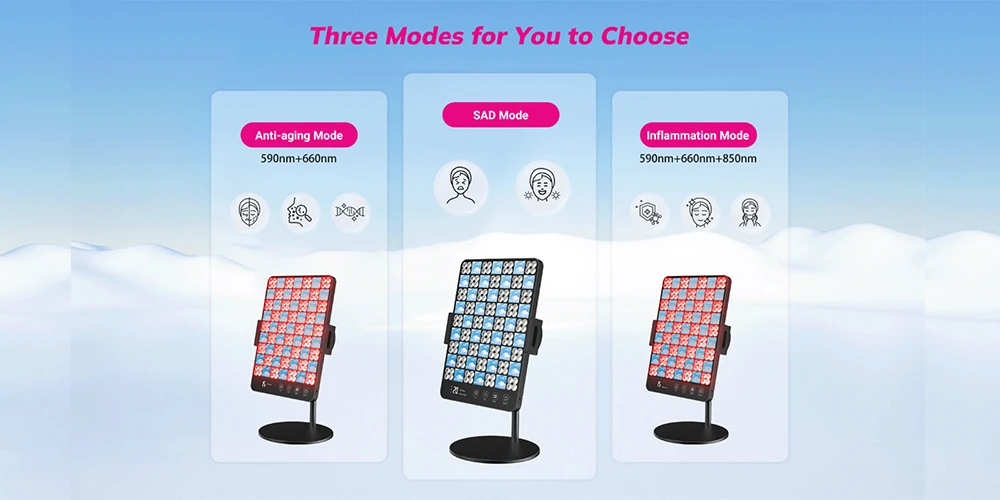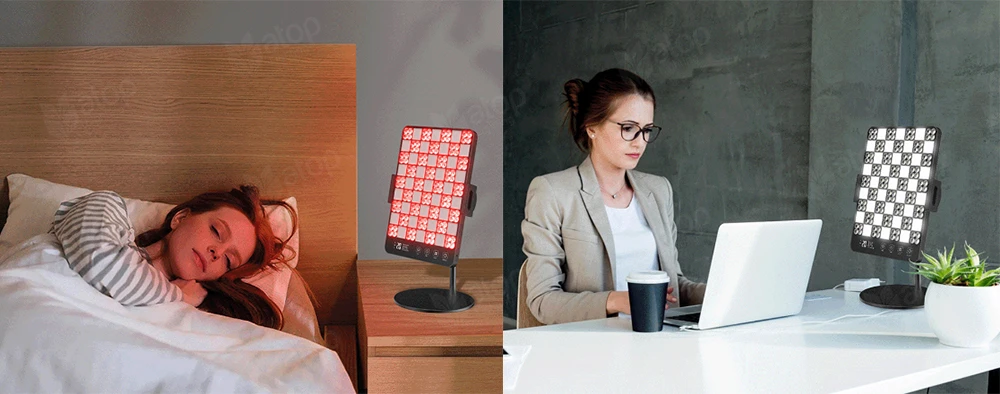Red Light Therapy Is a Bright Solution for Seasonal Affective Disorder
Have you noticed feeling down as the days grow shorter and winter sets in? You're not alone. Millions of people around the world struggle with more than just cold weather during this time. Symptoms like depression, fatigue, and a pervasive sense of gloom are common and are often associated with Seasonal Affective Disorder (SAD).
Mental health plays a vital role in our daily lives, and finding ways to combat seasonal depression is essential. One natural and promising approach to consider is red light therapy. In this blog, we’ll explore how red light therapy can brighten those dark days and naturally lift your spirits.
What is seasonal affective disorder
Seasonal Affective Disorder (SAD) is a type of depression that occurs at specific times of the year, typically during the fall and winter months when daylight hours are shorter. However, some individuals experience SAD during the spring and summer months.
Why do people experience SAD? While the exact cause of SAD is not fully understood, many researchers believe it is linked to reduced exposure to sunlight, which can disrupt the body's internal clock, known as the circadian rhythm. There is a nerve pathway from the light receptors in the retina to various parts of the brain, including the prefrontal cortex, which plays a key role in regulating mood and cognition.
It's easy to see why SAD affects so many people. Most of us spend over 90% of our time indoors due to work and daily commitments. We often find ourselves leaving for work before the sun rises and returning home after it has already set, limiting our exposure to natural light.

How red light therapy works for SAD
Dr.Mar Schoen, who has over 25 years of experience treating patients with depression, said using red and NIR light therapy is effective in catapulting out of an acute depressive state. Red light therapy utilizes red light and near-infrared light. This light penetrates the skin and is absorbed by the cells, particularly the mitochondria, which are the powerhouse of the cells.
Red light therapy can lead to several benefits to ease SAD.
- Circadian rhythm regulation: Red light therapy helps reset the body’s internal clock, which is often disrupted in SAD. By mimicking aspects of natural sunlight, it can help normalize sleep-wake cycles and improve sleep quality.
- Serotonin production: Serotonin is a key neurotransmitter involved in mood regulation. Low serotonin levels are often associated with depression, including SAD. Studies suggest that red light therapy may increase the production of serotonin, and ease depression.
- Melatonin regulation: Red light doesn’t interfere with the body’s natural melatonin production. This can lead to improved sleep patterns without disrupting the body’s natural rhythms.
Red light therapy vs. SAD light boxes
In addition to red light therapy, light boxes are commonly used to treat SAD. These light boxes, also known as bright light therapy lamps, SAD lamps, or happy lights, differ from red light therapy in that they mimic natural sunlight with bright artificial light. They are used to illuminate dark rooms and extend daylight exposure in indoor spaces, making them effective for managing SAD.
On the other hand, red light therapy delivers only red and near-infrared (NIR) light. This therapy provides beneficial light exposure regardless of weather conditions, helping people receive the light they need daily. Beyond treating SAD, red light therapy offers a range of other benefits, including skin rejuvenation, fitness enhancement, reduction of inflammation and joint pain, increased energy, and improved sleep.
Here is a table about the difference between red light therapy and SAD light box:
|
Feature |
Red light therapy |
SAD light box |
|
Other Names |
PBM, photomedicine, LED therapy |
Bright light therapy, SAD light, happy light |
|
Light Spectrum |
Red and NIR light |
Mimic sunlight with bright artificial light |
|
Primary Uses |
Daily use for skin rejuvenation, inflammation reduction, joint pain relief, wound healing, and athletic recovery |
Treatment of Seasonal Affective Disorder (SAD), improving mood, energy levels, and sleep patterns |
|
Mechanism of Action |
Stimulates cellular energy production, reduces inflammation, promotes collagen synthesis |
Mimics natural sunlight, regulating circadian rhythm and melatonin production |
|
Impact on Mood and Sleep |
Indirectly improves mood through pain relief and overall well-being; may improve sleep quality |
Directly affects brain chemicals linked to mood and sleep (serotonin and melatonin) |
Versatile light therapy combines red light and SAD therapy
Is it possible to harness the benefits of both therapies?
Absolutely! Our RLA02 light therapy device is designed to meet your needs by combining the advantages of red light therapy and SAD therapy. The RLA02 offers three targeted modes: Anti-Aging, SAD (Seasonal Affective Disorder), and Inflammation. RLA02 utilizes a specific combination of wavelengths — 590nm (yellow), 660nm (red), and 850nm (near-infrared): 590nm + 660nm for anti-aging mode, 590nm + 660nm + 850nm for inflammation mode.

With its sleek and modern design, the RLA02 seamlessly fits into any environment, whether at home or in the workplace. The adjustable angle feature adds flexibility, allowing you to direct the light exactly where you need it most.

For more details or ODM/OEM service, please feel free to contact us.
Disclaimer: This blog is for educational and entertainment purposes only and is not intended to be used for medical diagnosis, treatment, or prevention of any disease, illness, or health problem.

